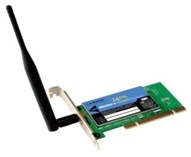Types of network topologies

BUS TOPOLOGY
A bus topology consists of a single central cable called the backbone to which all computers and other devices connect. It acts as the main physical pathway or central cable where all other devices are connected. All nodes share the backbone to communicate with each other on the network. Sometimes, a bus network has more than one server. Sometimes, a server is not needed on the network.
The bus transmits data, instructions, and information in both directions. When the sending device transmits data, the address of the receiving device is included with the transmission so that data is routed to the appropriate receiving device.
An advantage of the bus network is that computers or other devices can be attached or detached at any point without disrupting the network. If one of the nodes fails, the transmission simply bypass the faulty device and the bus network would still function as long as the backbone is working. Other advantage include easy implementation and extension, comparatively cheaper since the use of cable is minimal, able faults are easily identified.
The disadvantages however are due to limited cable length and number of stations, if there is a problem with the cable, the entire network fails, maintenance cost is higher in the long run, performance degrades as additional computers are added or with heavy traffic and proper termination is required.

RING TOPOLOGY
A ring topology consists of all computers and other devices that are connected in a loop. Ring topology is also known as a ring network. In a ring network each node directly connects to two neighbouring nodes. Data transmitted on the ring network travels from device to device around the entire ring in one direction only.
When a computer or device sends data, it will travel to each computer in the ring network until it reaches its destination. If a computer or device in the network fails, all devices before the failed device are unaffected, but thos after will not function. The ring network can span a larger area than a bus network but is more difficult to install.
A server may exist in a ring network, but it will not connect to all the nodes in the network. The server, like other nodes, will only communicate to its two neighbouring nodes. This type of topology is primarily used for LANs but can also function in WANs.
The advantages of this type of topology are :- minimal cable requirement, no wiring cabinet or closet needed, message can be automatically acknowledge, no data collision between nodes.
The disadvantages include network failure if any nodes goes down, troubleshooting is difficult because of the one way communication and the number of nodes and distances are limited.

STAR TOPOLOGY
In a star network, every node or devices are connected to a central device, usually a hub, that provides a common connection for the nodes.
All data transfers from one node to another will go through the hub. Data travels in both directions. Every node must connect to the hub in order to communicate. If one of the nodes fails, the star network can still function as long as the hub is working.
A star network is easier to install and maintain but it need more cables. Nodes can be added or removed from the network without disrupting the network. In other words is one node or device fails the network will not be affected. But if the hub fails the entire network will be down.
The advantages of this topology are :- its easy to install and set up, easy to detect or remove faulty devices, network is not affected by failed devices, easy to expand( add more nodes), easy to troubleshoot since the problems can be isolated and is more suited for a larger network.
The disadvantages are : - failure of central hub will result in network failure, cost more compared to bus or ring topologies and it requires more cable
























